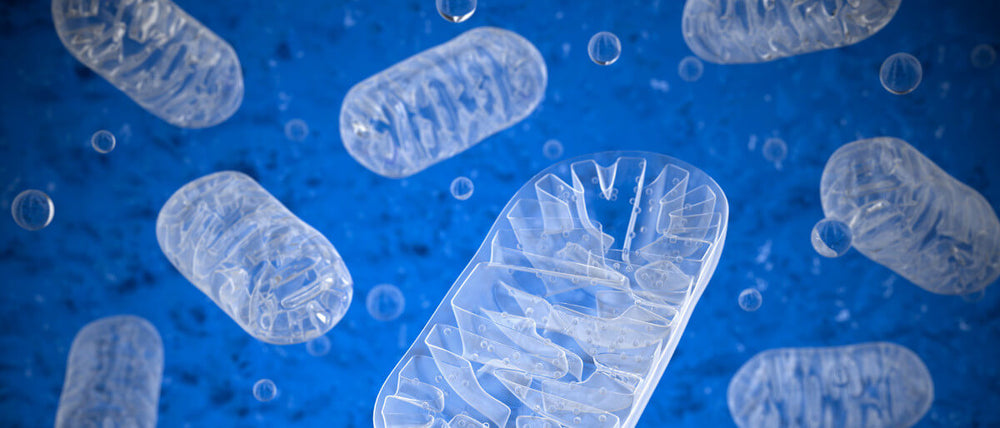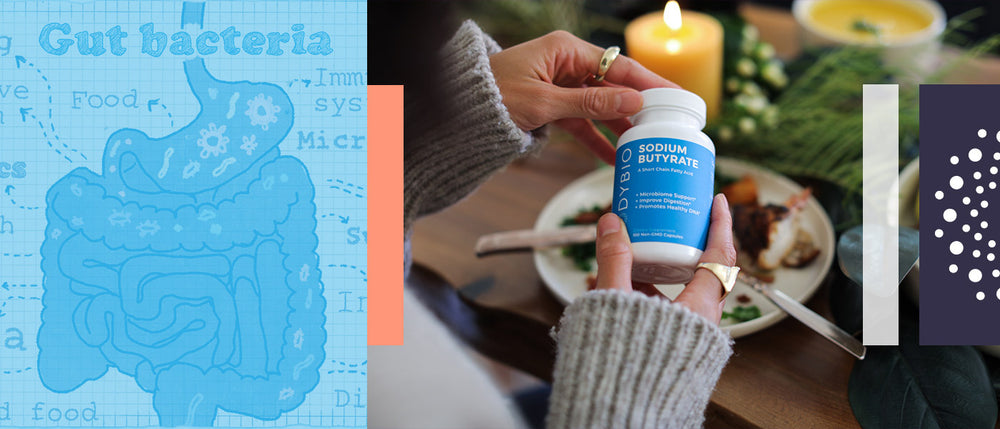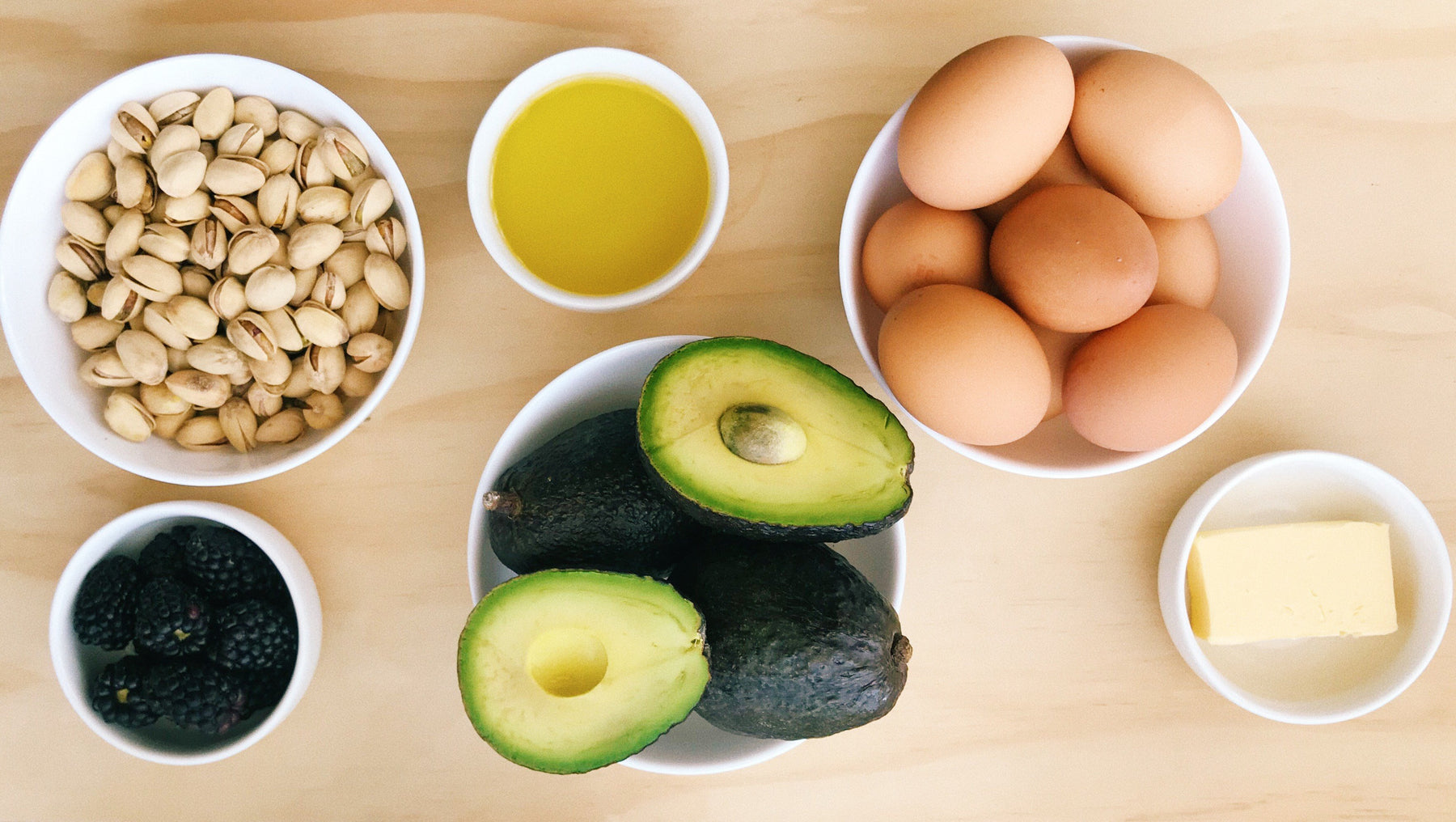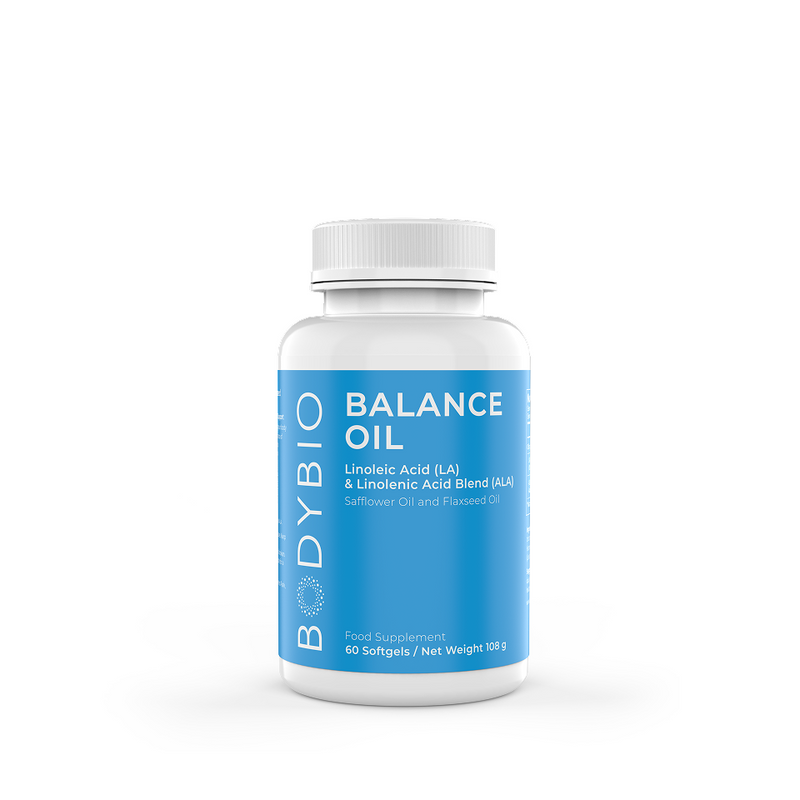What are Essential Fatty Acids? Everything You Need to Know
The essential fatty acids (EFA’s) are just that — essential, a fundamental component of our cell membranes. In a nutrition context, “essential” also means that EFAs have to come from the diet because the body can’t manufacture them. They can be used as fuel, but they are also vital components of the biological processes that make us work on a cellular level. Two fatty acid families are vital to humans, omega-6s and omega-3s.
The ultimate goal for good cellular health is to have a 4:1 ratio of omega-6 to omega-3. Unfortunately, a modern diet tends to disrupt the balance needed for these fats to perform their roles effectively, leading to a variety of health issues. In this article, we’re sharing more about these two fatty acid groups, including functions, health benefits, and real-life examples of essential fatty acids to emphasize their importance for our overall wellbeing and vitality.
What are Essential Fatty Acids?
Essential fatty acids (EFAs) are polyunsaturated fats that humans can’t make on their own, meaning they need to be sourced through our diets. They’re important not just for overall health but also for many bodily functions. There are two main types:
- Omega-6 fatty acids are found in many vegetable and seed oils, including sunflower, safflower, and evening primrose oil.
- Omega-3 fatty acids are present in seed oils such as flaxseed, chia, hemp, and walnuts.
Understanding Omega-6 and Omega-3 Fatty Acids
Research has shown that the omega-3 to 6 ratio is more important than their volume. The parent fatty acid (FA) in the omega-6 (n-6) line is linoleic acid (LA), abundant in many vegetable oils and ultimately responsible for the creation of arachidonic acid and other prostaglandins, which are compounds that regulate physiological activities.
Meanwhile, alpha-linolenic acid (ALA) is the mother omega-3 (n-3) fatty acid, commonly extracted from seed oils such as flaxseed and hemp, but also found in walnuts and of course, fatty fish. Nearly every aspect of human physiology is affected by these essential fats, receptors for which are located in practically every cell.
Fatty Acids and the Imbalance of Modern Diets
The n-6 fatty acids have been criticized in recent years because too many of them in the body has been linked to several metabolic issues. Unbalanced diets are harmful to health, and the n-6s that overpopulate processed foods and rancid supermarket oils have contributed to myriad health woes.
What possibly started as a 1:1 or 2:1 ratio of n-6 fatty acids to n-3 fatty acids in the human diet eons ago has become a physiological disaster of imbalance, where the ratio exceeds 10:1 in the typical Western diet, and may even approach 20:1, or worse, in personal food intake.
Fatty Acids and the Conversion Process
In the body, all fatty acids go through a transformation process to become bioactive compounds. The ultimate products of the process are beneficial to human health, especially if they are made step-by-step by the body and not forced upon it through manufactured meals, unnaturally finished meat products, stale/oxidized vegetable oils, not to mention horrific snack foods.
Importance of Gamma-Linolenic Acid (GLA)
In a healthy body, linoleic acid (n-6) is converted to gamma-linolenic acid (GLA), which becomes arachidonic acid, from which come the chemicals that control inflammation. After adulthood, the body’s ability to make those conversions is uncertain, so supplementing with GLA gives us a boost.
However, mother linoleic acid is anti-inflammatory in its own right and even a marginal conversion to GLA has been held effective in the management of conditions as diverse as rheumatoid arthritis, eczema, and ADD/ADHD.
Alpha-Linolenic Acid (ALA) and Its Benefits
The n-3 parent, ALA, also must come from the diet because humans lack the enzymes necessary to convert it from other fats. But it’s the downstream omega-3s that get all the good publicity: EPA and DHA. Like the n-6’s, the conversion of ALA to EPA and later to DHA is an uncertain question in adulthood, which is why most adults are told to take fish oil, a source of pre-made fatty acids.
Even in the absence of the requisite conversion co-factors (vitamin B6, Mg, biotin, vitamin B3, vitamin C, and Zn), pure ALA is anti-inflammatory and cardiac friendly. The most readily available plant-based source of ALA is flaxseed, although hemp seed, the newest kid on the block, is entering the marketplace.
Signs of Essential Fatty Acid Deficiencies
Fatty acid deficiency signs include a dry scaly rash, slowed growth in youngsters, increased susceptibility to infections, and poor wound healing, but these are not often attributed to fatty acid deficiency.
The enzymes that convert the parent fatty acids act preferentially toward the n-3s. By the time these enzymes deal with the omega-3 fats, some of the omega-6’s have been used for energy, hence the need to get more 6’s than 3’s, in a ratio of about 4:1, as evidenced by intensive research done in the 1990s and early-mid 2000s.
This ratio is based on the body’s own creation of the downstream fatty acids, GLA and arachidonic acid (AA) along the n-6 line and EPA/DHA down the n-3 line. Deficiency of essential fatty acids sometimes strikes those suffering from cystic fibrosis or fat malabsorption issues. If patients receive total parenteral nutrition without the inclusion of EFAs, a deficit will appear in about a week or two.
Essential Fatty Acids and the Brain
The dry weight of the brain is about 80% lipids, the highest of any organ. The long-chain polyunsaturated fats, especially the n-6 and n-3, are crucial in modulating neural function. They occupy as much as 30% of the brain’s dry weight, making their influence on neuronal health profound. The shift away from EFA’s in the Western—typically American—diet parallels a rise in mental disorders.
The need to address EFA supplementation is real and current, with the inclusion of omega-6 fats a necessity, since GLA, the downstream product of linoleic acid, has held its own in mental health studies (Vaddadi, 2006). Together, the n-6’s and n-3’s cooperate in a number of cellular functions that affect membrane fluidity, allowing the passage of food and energy into the cell and wastes out.
Brain Function and Arachidonic Acid
Arachidonic acid (AA) is a precursor to signaling molecules in the brain and is a key inflammatory modulator. At the same time, EPA and DHA work to support the cardiovascular system, and the brain and retina.
Arachidonic acid supports membrane fluidity in the hippocampus, the part of the brain that directs memory, spatial relations, and inhibition. It also protects the brain against oxidative stress and activates proteins in charge of the growth and repair of neurons.
Due to it’s brain supportive capabilities, there is conjecture that AA supplementation during the early stages of neurodegenerative disease may slow its progress and stave off symptoms, though more research is needed.
Functions of Essential Fatty Acids
Of the n-3s, EPA may be effective in addressing depressive conditions and behavioral anomalies, besides being able to reduce inflammation.
EPA improves blood viscosity and red blood cell deformity, which allows red cells to adjust their shape to squeeze through narrow blood vessels, like capillaries. Downstream from EPA is DHA, a major fatty acid in sperm, brain phospholipids, and the retina of the eye, and found to lower triglycerides. However, its claim to fame is its rapid increase in the developing brain during the third trimester of pregnancy and early postnatal period (Auestad, 2003) (Wainwright, 2000).
Essential Fatty Acids Sources
What foods do we need to acquire essential fatty acids? You could buy oils that boast omega-6 and omega-3 fatty acid content from the supermarket, but it’s almost guaranteed that the balance will be too far out of whack to deliver any benefit, and the purity of the oils is iffy at best. In fact, they might have the exact opposite effect of what you want. An overabundance of n-3s can shut the immune system down for lack of guidance by the n-6 inflammation directors.
On the other hand, BodyBio Balance Oil is a blend of organic, cold-pressed sunflower, safflower and flaxseed oils that are purposely geared to supply a 4:1 ratio of fatty acids that the body needs to initiate the cascade to longer chain fats that present vibrant physiological activity. Just the anti-inflammatory properties of the mother fatty acids, linoleic from sunflower and alpha-linolenic from flax, are enough to bolster the body’s well-being and to work out some metabolic kinks.
Used to make salad dressings or to dress vegetables in place of butter, Balance Oil has the potential to set cellular function straight, and the essential fatty acid metabolites can help to clear the brain fog on a hazy day.
Cerebral lipids, especially the long-chain fatty acids, have significant direct and indirect activity on cerebral function. Not only do they affect the membranes, but also many are converted to neurally active substances. There is good evidence that mental challenges are related to EFA depletion, the supplementation of which can ameliorate the most defiant state of affairs.
Get the Balance You Need with BodyBio
As you can see, essential fatty acids, especially omega-6 and omega-3, play a crucial role in maintaining overall health. Yet, the modern diet often disrupts the optimal balance of these fatty acids, causing further health problems. By understanding their importance and aiming for a better balance, we can support our body's physiological processes more effectively.
Achieving that balance doesn’t have to be complicated either. By incorporating a high-quality supplement like our Balance Oil (perfectly balanced omega-6 and 3) and Fish Oil+ into your routine (if extra omega-3s are needed), you can ensure you’re getting the ideal ratio of omega-3 and omega-6 fatty acids. At BodyBio, we formulate our supplements to be the highest quality on the market. Head here to explore all of our products and see how we can improve the health of every cell in your body!Auestad N, Scott DT, Janowsky JS, Jacobsen C, Carroll RE, Montalto MB, Halter R, Qiu W, et al Visual, cognitive, and language assessments at 39 months: a follow-up study of children fed formulas containing long-chain polyunsaturated fatty acids to 1 year of age. Pediatrics. 2003 Sep;112(3 Pt 1):e177-83.
Bassett CM, McCullough RS, Edel AL, Patenaude A, LaVallee RK, Pierce GN. The α-linolenic acid content of flaxseed can prevent the atherogenic effects of dietary trans fat. Am J Physiol Heart Circ Physiol. 2011 Dec;301(6):H2220-6. doi: 10.1152/ajpheart.00958.2010. Epub 2011 Sep 30.
Caramia G. The essential fatty acids omega-6 and omega-3: from their discovery to their use in therapy. Minerva Pediatr. 2008 Apr;60(2):219-33.
Chang CS, Sun HL, Lii CK, Chen HW, Chen PY, Liu KL. Gamma-Linolenic Acid Inhibits Inflammatory Responses by Regulating NF-kappaB and AP-1 Activation in Lipopolysaccharide-Induced RAW 264.7 Macrophages. Inflammation. 2009 Oct 20.
Darios F, Davletov B. Omega-3 and omega-6 fatty acids stimulate cell membrane expansion by acting on syntaxin 3. Nature. 2006 Apr 6;440(7085):813-7.
da Rocha CM, Kac G. High dietary ratio of omega-6 to omega-3 polyunsaturated acids during pregnancy and prevalence of post-partum depression. Matern Child Nutr. 2012 Jan;8(1):36-48. doi: 10.1111/j.1740-8709.2010.00256.x. Epub 2010 Jun 21.
Dupasquier CM, Dibrov E, Kneesh AL, Cheung PK, Lee KG, Alexander HK, Yeganeh BK, Moghadasian MH, Pierce GN. Dietary flaxseed inhibits atherosclerosis in the LDL receptor-deficient mouse in part through antiproliferative and anti-inflammatory actions. Am J Physiol Heart Circ Physiol. 2007 Oct;293(4):H2394-402. Epub 2007 Jul 6.
Fernandes FS, de Souza AS, do Carmo Md, Boaventura GT. Maternal intake of flaxseed-based diet (Linum usitatissimum) on hippocampus fatty acid profile: implications for growth, locomotor activity and spatial memory. Nutrition. 2011 Oct;27(10):1040-7.
Finnegan YE, Howarth D, Minihane AM, Kew S, Miller GJ, Calder PC, Williams CM. Plant and marine derived (n-3) polyunsaturated fatty acids do not affect blood coagulation and fibrinolytic factors in moderately hyperlipidemic humans. J Nutr. 2003 Jul;133(7):2210-3.
Fukaya T, Gondaira T, Kashiyae Y, Kotani S, Ishikura Y, Fujikawa S, Kiso Y, Sakakibara M. Arachidonic acid preserves hippocampal neuron membrane fluidity in senescent rats. Neurobiol Aging. 2007 Aug;28(8):1179-86. Epub 2006 Jun 21.
C. Gómez Candela, L. M.ª Bermejo López and V. Loria Kohen Importance of a balanced omega 6/omega 3 ratio for the maintenance of health.Nutritional recommendations Nutr Hosp. 2011;26(2):323-329.
Ángeles Guinda, M. Carmen Dobarganes, M. Victoria Ruiz-Mendez, Manuel Mancha Chemical and physical properties of a sunflower oil with high levels of oleic and palmitic acids European Journal of Lipid Science and Technology. 105(3-4); Apr 2003: 130-137
BRIAN HALLAHAN, MRCPsych and MALCOLM R. GARLAND, MRCPsych Essential fatty acids and mental health The British Journal of Psychiatry (2005); 186: 275-277
William S. Harris, PhD, FAHA, Chair; Dariush Mozaffarian, MD, DrPH, FAHA; et al Omega-6 Fatty Acids and Risk for Cardiovascular Disease A Science Advisory From the American Heart Association Nutrition Subcommittee of the Council on Nutrition, Physical Activity, and Metabolism; Council on Cardiovascular Nursing; and Council on Epidemiology and Prevention Circulation. 2009; 119: 902-907
Kakutani S, Ishikura Y, Tateishi N, Horikawa C, Tokuda H, Kontani M, Kawashima H, Sakakibara Y, Kiso Y, Shibata H, Morita I. Supplementation of arachidonic acid-enriched oil increases arachidonic acid contents in plasma phospholipids, but does not increase their metabolites and clinical parameters in Japanese healthy elderly individuals: a randomized controlled study. Lipids Health Dis. 2011 Dec 22;10:241.
Lands B. Consequences of essential Fatty acids. Nutrients. 2012 Sep;4(9):1338-57.
Eric L. LIEN, Kurt STEINER and John C. WALLINGFORD The Proper Balance of Essential Fatty Acids for Life Journal of Oleo Science. Vol. 50 (2001) , No. 5 399-405
Maekawa M, Takashima N, Matsumata M, Ikegami S, Kontani M, Hara Y, Kawashima H, Owada Y, Kiso Y, Yoshikawa T, Inokuchi K, Osumi N. Arachidonic acid drives postnatal neurogenesis and elicits a beneficial effect on prepulse inhibition, a biological trait of psychiatric illnesses. PLoS One. 2009;4(4):e5085. doi: 10.1371/journal.pone.0005085. Epub 2009 Apr 8.
Osumi N. Fatty acid signal, neurogenesis, and psychiatric disorders Nihon Shinkei Seishin Yakurigaku Zasshi. 2010 Jun;30(3):141-8.
Pan A, Chen M, Chowdhury R, Wu JH, Sun Q, Campos H, Mozaffarian D, Hu FB. α-Linolenic acid and risk of cardiovascular disease: a systematic review and meta-analysis. Am J Clin Nutr. 2012 Dec;96(6):1262-73. doi: 10.3945/ajcn.112.044040. Epub 2012 Oct 17.
Pawels EK, Volterrani D. Fatty acid facts, Part I. Essential fatty acids as treatment for depression, or food for mood? Drug News Perspect. 2008 Oct;21(8):446-51. doi: 10.1358/dnp.2008.21.8.1272136.
Peet M, Brind J, Ramchand CN, Shah S, Vankar GK. Two double-blind placebo-controlled pilot studies of eicosapentaenoic acid in the treatment of schizophrenia. Schizophr Res. 2001 Apr 30;49(3):243-51.
Sakayori N, Maekawa M, Numayama-Tsuruta K, Katura T, Moriya T, Osumi N. Distinctive effects of arachidonic acid and docosahexaenoic acid on neural stem /progenitor cells. Genes Cells. 2011 Jul;16(7):778-90. doi: 10.1111/j.1365-2443.2011.01527.x. Epub 2011 Jun 13.
Sanders TA, Rana SK. Comparison of the metabolism of linoleic and linolenic acids in the fetal rat. Ann Nutr Metab. 1987;31(6):349-53.
Schaeffer EL, Forlenza OV, Gattaz WF. Phospholipase A2 activation as a therapeutic approach for cognitive enhancement in early-stage Alzheimer disease. Psychopharmacology (Berl). 2009 Jan;202(1-3):37-51.
Simopoulos AP. The importance of the ratio of omega-6/omega-3 essential fatty acids. Biomed Pharmacother. 2002 Oct;56(8):365-79.
Artemis P. Simopoulos The Importance of the Omega-6/Omega-3 Fatty Acid Ratio in Cardiovascular Disease and Other Chronic Diseases Experimental Biology and Medicine 233:674-688 (2008)
Meharban Singh Essential fatty acids, DHA and human brain Indian Journal of Pediatrics. Volume 72, Number 3 / March, 2005: 239-242
Song C, Zhao S. Omega-3 fatty acid eicosapentaenoic acid. A new treatment for psychiatric and neurodegenerative diseases: a review of clinical investigations. Expert Opin Investig Drugs. 2007 Oct;16(10):1627-38.
Uauy R, Hoffman DR, Peirano P, Birch DG, Birch EE. Essential fatty acids in visual and brain development. Lipids. 2001 Sep;36(9):885-95.
Vaddadi K. Essential fatty acids and mental illness. Int Rev Psychiatry. 2006 Apr;18(2):81-4.
Vedtofte MS, Jakobsen MU, Lauritzen L, Heitmann BL The role of essential fatty acids in the control of coronary heart disease. Curr Opin Clin Nutr Metab Care. 2012 Nov;15(6):592-6.
Wainwright P. Nutrition and behaviour: the role of n-3 fatty acids in cognitive function. Br J Nutr. 2000 Apr;83(4):337-9.
Yehuda S, Carasso RL. Modulation of learning, pain thresholds, and thermoregulation in the rat by preparations of free purified alpha-linolenic and linoleic acids: determination of the optimal omega 3-to-omega 6 ratio. Proc Natl Acad Sci U S A. 1993 Nov 1;90(21):10345-9.
Yehuda S, Brandys Y, Blumenfeld A, Mostofsky DI. Essential fatty acid preparation reduces cholesterol and fatty acids in rat cortex. Int J Neurosci. 1996 Sep;86(3-4):249-56.
Yehuda S, Rabinovtz S, Carasso RL, Mostofsky DI. Essential fatty acids preparation (SR-3) improves Alzheimer's patients quality of life. Int J Neurosci. 1996 Nov;87(3-4):141-9.
Yehuda S, Rabinovitz S, Mostofsky DI. Essential fatty acids are mediators of brain biochemistry and cognitive functions J Neurosci Res. 1999 Jun 15;56(6):565-70.
Yehuda S, Rabinovitz S, Carasso RL, Mostofsky DI. The role of polyunsaturated fatty acids in restoring the aging neuronal membrane. Neurobiol Aging. 2002 Sep-Oct;23(5):843-53.
Young G, Conquer J. Omega-3 fatty acids and neuropsychiatric disorders. Reprod Nutr Dev. 2005 Jan-Feb;45(1):1-28.






